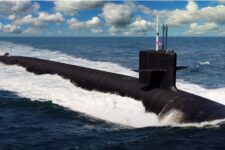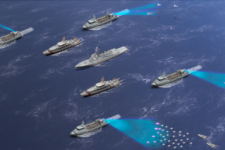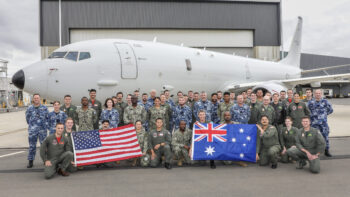 WASHINGTON: Defense contractors believe they must sell to foreign countries as US spending shrinks. But what’s materialized overseas so far is much too small to make up for the decline at home. So when Lockheed Martin‘s Mission Systems & Sensors unit, nicknamed MS2, convened reporters today ahead of next week’s Association of the US Army conference, they talked up their global strategy and a lot of prospects, but could offer precious few actual sales.
WASHINGTON: Defense contractors believe they must sell to foreign countries as US spending shrinks. But what’s materialized overseas so far is much too small to make up for the decline at home. So when Lockheed Martin‘s Mission Systems & Sensors unit, nicknamed MS2, convened reporters today ahead of next week’s Association of the US Army conference, they talked up their global strategy and a lot of prospects, but could offer precious few actual sales.
It’s true that Foreign Military Sales hit a record $65 billion for fiscal 2012, driven largely by Asia and the Middle East, and it’s those two regions Lockheed is targeting. Global sales help not only the company but the United States as well, claimed Michele Evans MS2’s business development chief, because they equip friends and allies with compatible equipment, keep the industrial base open, and keep production volumes up so all customers, US and foreign alike, can reap economies of scale.
But scale is what’s lacking in most foreign sales, compared to Pentagon purchases. The biggest foreign deal that MS2 could tout today was last year’s $3 billion sale of 24 MH-60R helicopters to Australia, America’s best friend in the Pacific. (Sikorsky builds the actual helicopter, but Lockheed integrates the high-value-added avionics). The MH-60 is also competing for sales to Denmark and South Korea, with a decision expected by the end of the year, but even if the Lockheed-Sikorsky team wins both contracts, the two together will total less than 20 helicopters. Lockheed said other countries have also expressed interest in the aircraft, including Brazil and undisclosed states in Africa, but there’s nothing solid yet. So the best case in the near-term is less than 44 MH-60s sold abroad. Compare that to the U.S. Navy’s multi-year contracts to buy 300.
Lockheed also touted international interest in a derivative of the Navy’s Littoral Combat Ship, which they’re calling the “Multi-Mission Combatant.” Why the rename? The US Navy is buying the LCS for specialized supporting roles, with plug-and-play “mission modules” to kit it out variously for minesweeping, sub-hunting, or fighting small boats, depending on current needs. Foreign customers with much more modest fleets are looking at the LCS as a jack of all trades, so they want it to be able to switch from one role to the next without heading back to port to change out modules.
“They definitely want a ship that can do it all, all the time, so they’re not so concerned about bringing on mission packages,” said Tom Cosgrove the business development executive dedicated to foreign sales of the LCS derivative. “It’ll have fixed systems instead.”
Cosgrove touted the Multi-Mission Combatant’s suitability for the shallows and narrows of the Gulf and Southeast Asia. But he declined to name any specific potential customers, saying only that “we’re having a busy time [with] a steady trickle of requests for briefs.” But this is hardly the first time that Lockheed or General Dynamics, which builds a different version of the LCS, have suggested the LCS for sales abroad, only to be stymied by the ship’s high cost compared to traditional corvettes and fast attack craft available on the global market.
The third MS2 program touted this morning was the Q-53 radar, which picks up incoming artillery shells, rockets, and mortar rounds from up to 60 kilometers away, both to warn friendly troops and to direct retaliatory counter-fire. The Q-53 is a truck-mounted, four-man system that’s already served in both Afghanistan and Iraq, and it replaces two older Army radars that collectively required 16 soldiers to operate. Lockheed is now upgrading the software to track aircraft, which might replace yet a third radar system. It’s an impressive advance, and Lockheed is working on a trailer-mounted version that foreign armies can tow behind their own trucks.
But Lockheed is just starting to explore international sales for the Q-53. There’s potential there, but it isn’t that large. Even the current US contract — for up to $800 million and 80 radars, if the Army exercises all its options — is worth less than a handful of Lockheed Joint Strike Fighters, a top target of budget cutters. Any foreign army would buy fewer radars than the US.
So while international sales may well take the edge off the defense industry’s hunger, they may not fill the growling hole left by US cuts.
After chilly silence, US SecDef, China defense minister hold first talks
Having regular mil-to-mil talks with China “is an important priority for us,” a senior defense official said, pointing to the PRC’s behavior in the South China Sea, as well as the importance of “peace and stability across the Taiwan Strait.”



























